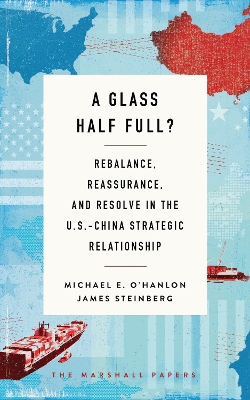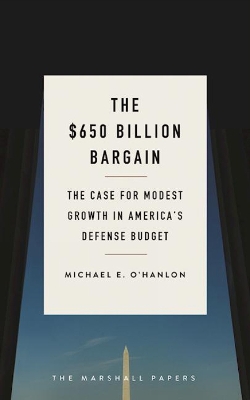The Marshall Papers
2 total works
The U.S.-China relationship has not always been smooth, but since Richard Nixon's opening in the early 1970s, the two countries have evolved a relationship that has been generally beneficial to both parties. Economic engagement and a diplomatic partnership together with robust trade and investment relations, among other activities, have meant a peaceful context for reform and China's rise, helping to lift millions of Chinese out of poverty and giving the PRC incentive to work within the U.S.-led global order.
The logic of the relationship, however, is now open to serious debate on both sides of the Pacific. After a period of American preoccupation with the Middle East, President Obama attempted a rebalancing of U.S. interests toward the Asia-Pacific region. With the Trump administration in office, the U.S.-China relationship appears to be at a crossroads: does it continue to focus on constructive engagement and managing differences, or prepare for a new era of rivalry and conflict?
Here, following up on their 2014 book, Strategic Reassurance and Resolve, the authors provide a more balanced assessment of the current state of relations and suggest measures that could help stabilize the security relationship, without minimizing the very real problems that both Beijing and Washington must address. The authors are hopeful, but are also under no illusions about the significance of the challenges now posed to the bilateral relationship, as well as regional order, by the rise of China and the responses of America together with its allies.
The logic of the relationship, however, is now open to serious debate on both sides of the Pacific. After a period of American preoccupation with the Middle East, President Obama attempted a rebalancing of U.S. interests toward the Asia-Pacific region. With the Trump administration in office, the U.S.-China relationship appears to be at a crossroads: does it continue to focus on constructive engagement and managing differences, or prepare for a new era of rivalry and conflict?
Here, following up on their 2014 book, Strategic Reassurance and Resolve, the authors provide a more balanced assessment of the current state of relations and suggest measures that could help stabilize the security relationship, without minimizing the very real problems that both Beijing and Washington must address. The authors are hopeful, but are also under no illusions about the significance of the challenges now posed to the bilateral relationship, as well as regional order, by the rise of China and the responses of America together with its allies.
U.S. defense spending isn't excessive and, in fact, should continue to grow because it's both affordable and necessary in today's challenging world.
The United States spends a lot of money on defense $607 billion in the current fiscal year. But Brookings national security scholar Michael O'Hanlon argues that is roughly the right amount given the overall size of the national economy and continuing U.S. responsibilities around the world. If anything, he says spending should increase modestly under the next president, remaining near 3 percent of gross domestic product.
Recommendations in this book differ from the president's budget plan in two key ways. First, the author sees a mismatch in the Pentagon's current plans between ends and means. The country needs to spend enough money to carry out its military missions and commitments. Second, O'Hanlon recommends dropping a plan to cut the size of the Army from the current 475,000 active-duty soldiers to 450,000.
The U.S. national defense budget is entirely affordable relative to the size of the economy, relative to past levels of effort by this country in the national security domain, and relative, especially, to the costs of failing to uphold a stable international order. Even at a modestly higher price, it will be the best $650 billion bargain going, and a worthy investment in this country's security and its long-term national power.
The United States spends a lot of money on defense $607 billion in the current fiscal year. But Brookings national security scholar Michael O'Hanlon argues that is roughly the right amount given the overall size of the national economy and continuing U.S. responsibilities around the world. If anything, he says spending should increase modestly under the next president, remaining near 3 percent of gross domestic product.
Recommendations in this book differ from the president's budget plan in two key ways. First, the author sees a mismatch in the Pentagon's current plans between ends and means. The country needs to spend enough money to carry out its military missions and commitments. Second, O'Hanlon recommends dropping a plan to cut the size of the Army from the current 475,000 active-duty soldiers to 450,000.
The U.S. national defense budget is entirely affordable relative to the size of the economy, relative to past levels of effort by this country in the national security domain, and relative, especially, to the costs of failing to uphold a stable international order. Even at a modestly higher price, it will be the best $650 billion bargain going, and a worthy investment in this country's security and its long-term national power.

